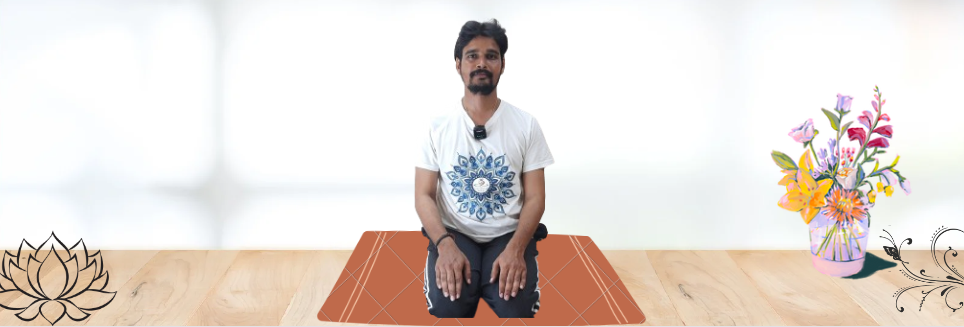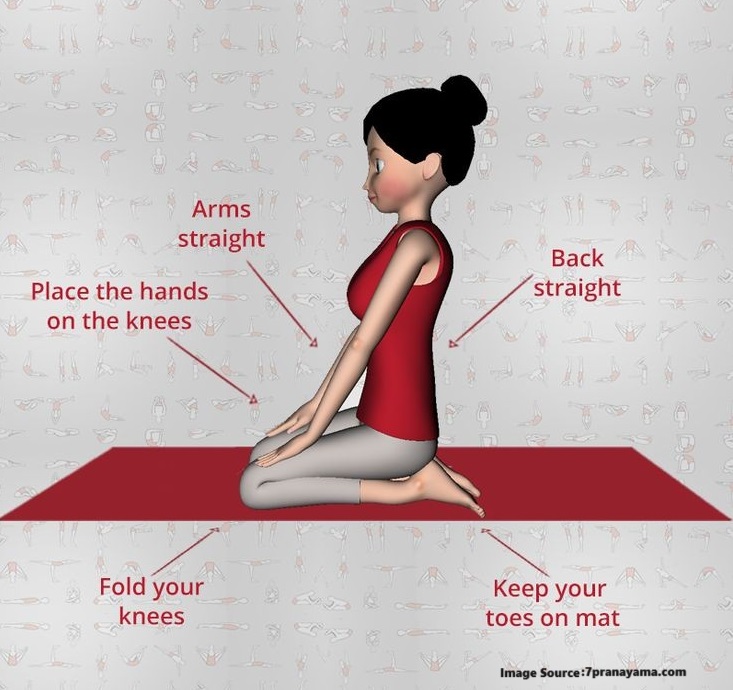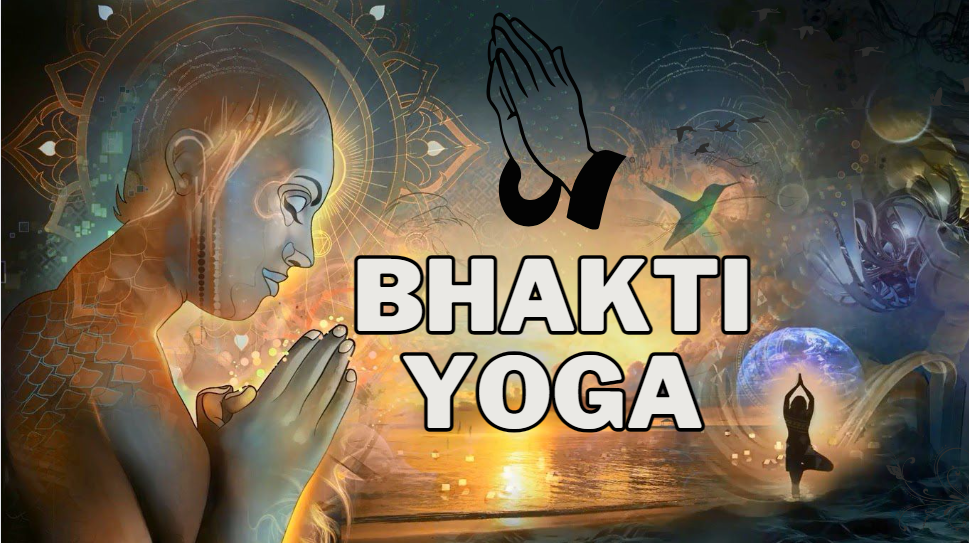Vajrasana: A Comprehensive Guide with 7 health benefits
“Vajrasana, the Thunderbolt Pose, anchors us to the present, grounding our spirit while igniting a flame of inner strength.”

Vajrasana, also known as the Thunderbolt Pose, holds a revered place in the realm of yoga. Originating from ancient Sanskrit texts, Vajrasana signifies both strength and serenity. This foundational asana is revered for its ability to foster stability and inner tranquility. Vajra means diamond. This asana makes body and mind strong like a diamond. Hence this asana termed with that name.
The Historical Roots of Vajrasana
Tracing its roots back to traditional yoga scriptures, Vajrasana has been practiced for centuries. Its name, derived from the Sanskrit words ‘Vajra’ meaning thunderbolt and ‘Asana’ meaning pose, encapsulates its essence—steadfastness and resilience.
“वज्रसनं कुर्यात्तु यत्नात् सिद्धिं लभेन्नरः |
स्थिरं सुखं प्रसन्नं च वज्रसनं तदुच्यते ||”
“vajrasanaṃ kuryāttu yatnāt siddhiṃ labhennaraḥ |
sthiraṃ sukhaṃ prasannaṃ ca vajrasanaṃ taducyate ||”
– Gheranda Samhita, 2nd Chapter
Step-by-Step Guide to Vajrasana
Preparation
Sit in samastiti. Samastiti is the first step one has to take before practicing any yoga asanas. It starts with sitting on floor with stretched legs and joining them together. Keep the palms on the either side of the thighs. Looking straight forward breath for 5 times.
Starting Position
While exhaling fold both the legs together backward and sit on the heals. Keep the palms over the respective knees.
Breathing Technique
Engage in deep, rhythmic breathing, looking straight forward breath for 5 times. allowing the breath to flow naturally as you hold the pose

Benefits of Practicing Vajrasana
Physical Benefits
It is renowned for its myriad physical benefits. It aids in digestion, strengthens the lower back, and improves posture. Regular practice of this asana can also alleviate issues related to sciatica and promote overall spinal health.
Mental and Emotional Benefits
Beyond its physical advantages, this asana is a sanctuary for the mind. It fosters a sense of calmness and clarity, making it an invaluable tool for stress relief and mental well-being.
Overall Benefits
- Strengthens the body and mind.
- Improves concentration.
- Strengthens the spinal cord.
- Overcomes arthritis.
- Overcomes sciatica pain.
- Overcomes flat foot.
- Remedy for back ache
Precautions and Contraindications
While this asana offers a plethora of benefits, it is essential to approach it with caution.
Who Should Avoid
Individuals with knee or ankle injuries should refrain from practicing this asana. Pregnant women, especially those in advanced stages, are advised to exercise caution.
Common Mistakes and How to Avoid Them
Avoid straining the knees by ensuring that the weight is evenly distributed. Maintain a relaxed posture and listen to your body’s signals, adjusting the pose as needed
Variations for Experienced Practitioners
Experienced practitioners can explore advanced variations of this asana by incorporating lying position which is called as SuptaVajrasana.
Procedure:
Step 1: one has to maintain the starting position of the Vajrasana to perform its variation.
Step 2: Exhaling catch the respective big toes by palms. Inhale there itself.
Step 3: Exhaling bend forward and keep the forehead on the floor in front. Closing the eyes and breath for 5 times.
Step 4: While inhaling come up and leave the hands. Exhale there itself.
Step 5: Inhaling stretch both the legs together in front.
Benefits:
- Improves blood circulation to the head.
- Improves memory and intelligence.
- Overcomes lower back ache.
- Remedy for neck pain.
- Improves flexibility of spinal cord.
- Overcomes the constipation.
- Improves digestive capacity.
- Strengthens the functioning of heart.
Conclusion and Takeaways
Categories
Frequently Asked Question
Can I Combine Vajrasana with any other Asana?
Useful Links
Subscribe Now
Don’t miss our future updates! Get Subscribed Today!
© YŌGĀDVIKA | All Rights Reserved




